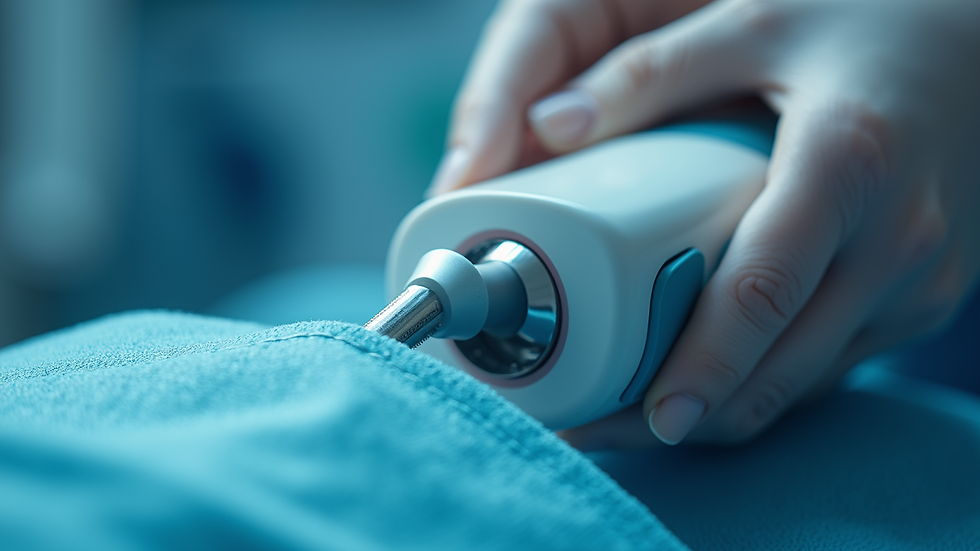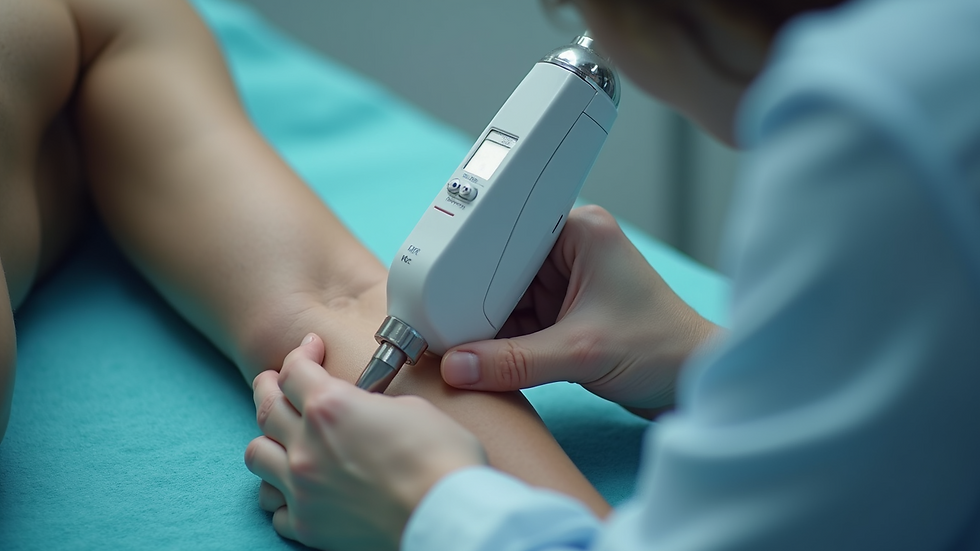A Guide to Non-Surgical Fat Reduction Methods
- Nichole Gray
- Aug 19
- 4 min read
Fat reduction has become a popular goal for many seeking to improve their body shape and confidence. While traditional surgical options like liposuction are effective, they come with risks, downtime, and higher costs. Fortunately, advances in technology have introduced a variety of non-invasive treatments that offer fat reduction without surgery. These methods are designed to target stubborn fat areas safely and with minimal discomfort.
This guide will explore the most effective non-surgical fat reduction methods, how they work, and what you can expect from each. Whether you want to slim down your abdomen, thighs, or arms, there are options available that can fit your lifestyle and goals.
Understanding Non-Invasive Treatments for Fat Reduction
Non-invasive treatments use various technologies to reduce fat cells without cutting the skin or requiring anesthesia. These procedures typically involve:
Cooling fat cells to destroy them (cryolipolysis)
Heating fat cells using radiofrequency or ultrasound
Using laser energy to break down fat
Injecting substances that dissolve fat cells
Each method targets fat cells differently but shares the goal of reducing fat volume in specific areas. The body then naturally eliminates the destroyed fat cells over time.
Popular Non-Invasive Fat Reduction Technologies
Cryolipolysis (CoolSculpting)
This method freezes fat cells, causing them to die and be removed by the body. It is FDA-approved and commonly used for the abdomen, flanks, and thighs. Treatments last about 35-60 minutes per area, with minimal discomfort.
Radiofrequency (RF) Therapy
RF heats fat cells and tightens skin by stimulating collagen production. It is effective for mild to moderate fat reduction and skin laxity. Sessions usually last 20-40 minutes.
Ultrasound Fat Reduction
High-intensity focused ultrasound (HIFU) targets fat cells with sound waves, breaking them down. It also promotes skin tightening and is often used on the abdomen and chin.
Laser Lipolysis
Low-level lasers penetrate the skin to disrupt fat cells, which are then metabolized by the body. This method is less common but can be combined with other treatments.
Injection Lipolysis
Injections of substances like deoxycholic acid dissolve fat cells, especially in small areas like under the chin. Multiple sessions may be needed.

Benefits and Considerations of Non-Invasive Treatments
Non-invasive fat reduction offers several advantages over surgical options:
No incisions or anesthesia required
Minimal to no downtime; most people return to normal activities immediately
Lower risk of complications such as infection or scarring
Gradual, natural-looking results as fat cells are eliminated over weeks to months
However, there are some important considerations:
Results are usually less dramatic than surgical liposuction
Multiple sessions may be necessary for optimal results
Not suitable for significant weight loss or obesity
Some treatments may cause temporary redness, swelling, or numbness
To maximize results, it is recommended to maintain a healthy diet and exercise routine alongside these treatments.
Is there a non invasive arm fat reduction?
Yes, non-invasive arm fat reduction is possible and increasingly popular. The upper arms are a common area where fat can accumulate and be resistant to diet and exercise. Several non-surgical options target this area effectively:
Cryolipolysis can be applied to the upper arms to freeze and reduce fat pockets.
Radiofrequency treatments help tighten loose skin and reduce fat simultaneously.
Injection lipolysis is sometimes used for smaller fat deposits on the arms.
These treatments are generally safe and well-tolerated. Patients often notice gradual slimming and improved arm contour after a few weeks. It is important to consult with a qualified provider to determine the best approach based on your arm size, skin condition, and goals.

How to Choose the Right Non-Surgical Fat Reduction Method
Choosing the best non-invasive fat reduction method depends on several factors:
Target area: Some treatments work better on certain body parts.
Amount of fat: Larger fat deposits may require more sessions or different technologies.
Skin elasticity: If skin tightening is also desired, RF or ultrasound may be preferred.
Budget and time: Consider the cost per session and how many treatments you can commit to.
Medical history: Certain conditions may affect treatment suitability.
Steps to Make an Informed Decision
Research providers: Look for licensed clinics with experienced practitioners.
Schedule a consultation: Discuss your goals and get a personalized treatment plan.
Ask about side effects and recovery: Understand what to expect during and after treatment.
Review before and after photos: See real results from previous patients.
Check for package deals or financing: Some clinics offer discounts for multiple sessions.
By taking these steps, you can find a safe and effective non-invasive fat reduction option tailored to your needs.
What to Expect During and After Treatment
Non-invasive fat reduction treatments are generally quick and comfortable. Here is a typical experience:
Before treatment: The area is cleaned and marked. Some devices use a gel or applicator.
During treatment: You may feel sensations like cold, heat, tingling, or mild suction depending on the technology.
After treatment: Most people resume normal activities immediately. Some redness, swelling, or numbness may occur but usually resolves within days.
Results develop gradually as the body processes and removes fat cells. Visible changes often appear within 4-6 weeks, with full results in 2-3 months.
Tips for Enhancing Results
Stay hydrated to help flush out fat cells.
Maintain a balanced diet and regular exercise.
Follow any post-treatment care instructions from your provider.
Avoid smoking and excessive alcohol consumption.

Exploring Non-Invasive Fat Reduction Further
If you are considering options beyond diet and exercise, exploring non-invasive fat reduction treatments can be a smart choice. These methods offer a safer, less painful alternative to surgery with the convenience of minimal downtime.
By understanding the different technologies, benefits, and what to expect, you can make an informed decision that aligns with your body goals. Remember, consistency and realistic expectations are key to achieving satisfying results.
Non-surgical fat reduction is not a quick fix but a gradual process that can enhance your natural shape and boost confidence. Consult with a trusted specialist to start your journey toward a slimmer, more contoured you.


Comments